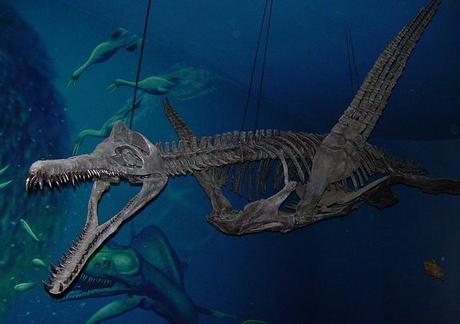
In 1987 palaeontologists discovered the gigantic fossilised remains of a plesiosaur, later christened Poly. Fossil discoveries are always exciting, even when the species is well known like the plesiosaur, but this specimen evoked some extra curiosity due to a jumble of bones in the abdominal cavity. It was already long confirmed that Poly was a carnivorous reptile and savage predator, and indeed scientists were able to deduce that the smaller creature was definitely internalised at it’s time of death, but they still had some lengthy investigations to perform.
Now, after over two decades of hard work the intricate re-assemblage has shown that Poly was harbouring a miniature plesiosaur, and not likely a juvenile meal. The immature bones and un-fused spine instead point to a foetus about two thirds of the way through its development, and one that is simply too large to have been contained in an egg (as traditional for reptiles). Poly’s size and physical characteristics have always led to the assumption that she would be far to cumbersome to beach herself for egg laying like most reptiles, yet since the first plesiosaur excavation in the early 19th century there has been no fossil evidence to prove live birth- until now.
Based on many of our current oceanic species that bare live young, we know that the incredible amount of energy invested in carrying a foetus to term means that post birth nurturing behavior is exceptionally common. Mothers will take care of their offspring for extended periods in an effort to make gestation a worthwhile expense, therefore increasing their chances of genetic propagation. Poly may have had far more in common with today’s whales and dolphins than her terrestrial dinosaur cousins.
There are still some small speculations as the foetus is missing bones which sceptics say could possibly have been chomped to dust as the adult fed, and suggesting that the fragmented spine again may be attributed to some ferocious munching! More examples of young plesiosaurs alongside their mothers would need to be found before any concrete conclusions can be made, but for now it would appear that this huge reptilian sea predator may have had a much softer side.
